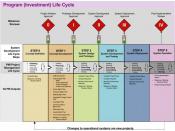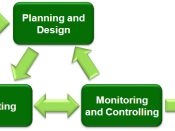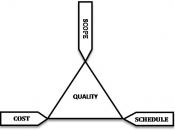Model Intervention Definitions
1.Action Planning - Action Research:
A cyclical process of diagnosis-change-research-diagnosis-change-research. The results of diagnosis produce ideas for changes, the changes are introduced into the same system, and their effects noted through further research and diagnosis. The number of cycles may be infinite.
2. Ad hoc Task Force Teams:
A group established to solve a particular problem. This team may be disbanded after its works is accomplished.
3. Appreciative inquiry:
A contemporary approach to planned change. Contrary to the typical approaches that assume organizations are like problems to be solved. Appreciative Inquiry works under the assumption that organizations are like mysteries to be understood. A focus on the "best of what is" in an organization provides the necessary vision for change.
4. Assertiveness:
5. Behavioral Skills Training:
Teach employees a wide variety of skill building as well as job training by reviewing employee's' behavior, showing the employees correct and incorrect behavior and providing feedback.
6. Boundary Management:
A team used to describe systems or fields of interacting forces and manage or minimize these forces. Boundaries can be physical such as a wall; social processes, such as boundaries ries between ethnic groups
7. Coaching:
An intervention designed to improve the competencies of individual organization members through committed support, feedback, new views of work, new visions of the organization, and new ways of relating to people.
8. Commitment Chartering:
* A common agreed upon set of goals, measures and rules.
* A commitment to the required goals and tasks and to each other.
* Interdependent work; each person's work is linked to one another.
* Adequate resources to perform the work as a team.
Chartering is the "act of guiding the team through the process of defining itself." It defines purpose, scope, goals, roles, responsibilities and behavior.
9. Communications:...


